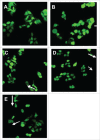Protective effect of Schizandrin B against damage of UVB irradiated skin cells depend on inhibition of inflammatory pathways
- PMID: 27689692
- PMCID: PMC5172505
- DOI: 10.1080/21655979.2016.1227572
Protective effect of Schizandrin B against damage of UVB irradiated skin cells depend on inhibition of inflammatory pathways
Abstract
Schizandrin B is extracted from Schisandra chinensis (Turcz.) Baill. This study evaluated the photoprotective effect of Schizandrin B on oxidative stress injury of the skin caused by UVB-irradiation and the molecular mechanism of the photoprotective effect of Schizandrin B, and we firstly found that Schizandrin B could block Cox-2, IL-6 and IL-18 signal pathway to protect damage of skin cells given by UVB-irradiation. In the research, we found that Schizandrin B can attenuate the UVB-induced toxicity on keratinocytes and dermal fibroblasts in human body, and can outstandingly eliminated intracellular ROS produced by UVB-irradiation. These results demonstrate that Schizandrin B can regulate the function of decreasing intracellular SOD's activity and increasing the expression level of MDA in HaCaT cells result from the guidance of UVB, and it markedly reduced the production of inflammatory factors such as Cox-2, IL-6 or IL-18, decreased the expression level of MMP-1, and interdicted degradation process of collagens in UVB-radiated cells. Therefore, skin keratinocytes can be effectively protected from UVB-radiated damage by Schizandrin B, and UVB-irradiation caused inflammatory responses can be inhibited by attenuating process of ROS generating.
Keywords: COX-2; ROS; Schizandrin B; UVB-irradiation; collagen; photoaging.
Figures









Similar articles
-
The Protecting Effect of Deoxyschisandrin and Schisandrin B on HaCaT Cells against UVB-Induced Damage.PLoS One. 2015 May 15;10(5):e0127177. doi: 10.1371/journal.pone.0127177. eCollection 2015. PLoS One. 2015. PMID: 25978330 Free PMC article.
-
Triolein reduces MMP-1 upregulation in dermal fibroblasts generated by ROS production in UVB-irradiated keratinocytes.J Dermatol Sci. 2017 Feb;85(2):124-130. doi: 10.1016/j.jdermsci.2016.11.010. Epub 2016 Nov 27. J Dermatol Sci. 2017. PMID: 27932255
-
Artocarpus altilis heartwood extract protects skin against UVB in vitro and in vivo.J Ethnopharmacol. 2015 Dec 4;175:153-62. doi: 10.1016/j.jep.2015.09.023. Epub 2015 Sep 18. J Ethnopharmacol. 2015. PMID: 26387741
-
Plant extracts and natural compounds used against UVB-induced photoaging.Biogerontology. 2017 Aug;18(4):499-516. doi: 10.1007/s10522-017-9715-7. Epub 2017 Jul 12. Biogerontology. 2017. PMID: 28702744 Free PMC article. Review.
-
UVB-generated Microvesicle Particles: A Novel Pathway by Which a Skin-specific Stimulus Could Exert Systemic Effects.Photochem Photobiol. 2017 Jul;93(4):937-942. doi: 10.1111/php.12703. Epub 2017 Mar 2. Photochem Photobiol. 2017. PMID: 28039861 Free PMC article. Review.
Cited by
-
Sinomenine ameliorates cardiac hypertrophy by activating Nrf2/ARE signaling pathway.Bioengineered. 2021 Dec;12(2):12778-12788. doi: 10.1080/21655979.2021.2000195. Bioengineered. 2021. PMID: 34895050 Free PMC article.
-
A comprehensive review of Schisandra chinensis lignans: pharmacokinetics, pharmacological mechanisms, and future prospects in disease prevention and treatment.Chin Med. 2025 Apr 9;20(1):47. doi: 10.1186/s13020-025-01096-z. Chin Med. 2025. PMID: 40205412 Free PMC article. Review.
-
Protective Effects of Kuding Tea (Ilex kudingcha C. J. Tseng) Polyphenols on UVB-Induced Skin Aging in SKH1 Hairless Mice.Molecules. 2019 Mar 13;24(6):1016. doi: 10.3390/molecules24061016. Molecules. 2019. PMID: 30871261 Free PMC article.
-
Analysis of regulatory effect of miR-149-5p on Sphingosine-1-phosphate receptor 2 of pericytes and its neuroprotective molecular mechanism after acute cerebral ischemia reperfusion in rats.Bioengineered. 2021 Dec;12(1):3348-3357. doi: 10.1080/21655979.2021.1947167. Bioengineered. 2021. PMID: 34224319 Free PMC article.
-
Evaluation of the Antioxidant, Cytoprotective and Antityrosinase Effects of Schisandra chinensis Extracts and Their Applicability in Skin Care Product.Molecules. 2022 Dec 14;27(24):8877. doi: 10.3390/molecules27248877. Molecules. 2022. PMID: 36558009 Free PMC article.
References
-
- Kappes UP, Luo D, Potter M, Schulmeister K, Rünger TM. Runger.Short- and long-wave UV light (UVB and UVA) induce similar mutations in human skin cells. J Invest Dermatol 2006; 126(3):667-75; PMID:16374481; http://dx.doi.org/10.1038/sj.jid.5700093 - DOI - PubMed
-
- Ji C, Yang B, Yang Z, Tu Y, Yang YL, He L, Bi ZG. Ultra-violet B (UVB)-induced skin cell death occurs through a cyclophilin D intrinsic signaling pathway. Biochem Biophys Res Commun 2012; 425(4):825-9; PMID:22892127; http://dx.doi.org/10.1016/j.bbrc.2012.07.160 - DOI - PubMed
-
- Van Laethem A, Claerhout S, Garmyn M, Agostinis P. The sunburn cell:regulation of death and survival of the keratinocyte. Int J Biochem Cell Biol 2005; 37(8):1547-53; PMID:15896663; http://dx.doi.org/10.1016/j.biocel.2005.02.015 - DOI - PubMed
-
- Ito T, Seo N, Yagita H, Tsujimura K, Takigawa M, Tokura Y. Alterations of immune functions in barrier disrupted skin by UVB irradiation. J Dermatol Sci 2003; 33(3):151-9; PMID:14643520; http://dx.doi.org/10.1016/S0923-1811(03)00177-4 - DOI - PubMed
-
- Fischer TW, Zbytek B, Sayre RM, Apostolov EO, Basnakian AG, Sweatman TW, Wortsman J, Elsner P, Slominski A. Melatonin increases survival of HaCaT keratinocytes by suppressing UV-induced apoptosis. J Pineal Res 2006; 40(1):18-26; PMID:16313494; http://dx.doi.org/10.1111/j.1600-079X.2005.00273.x - DOI - PubMed
MeSH terms
Substances
LinkOut - more resources
Full Text Sources
Other Literature Sources
Research Materials
Miscellaneous
